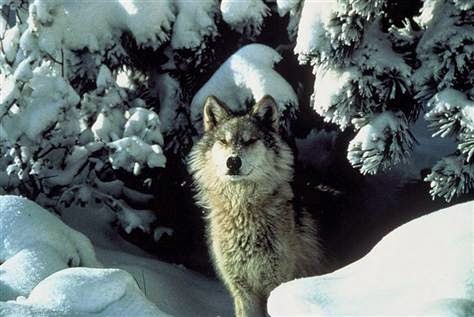Thursday, 2 April 2015
Tuesday, 24 March 2015
LEATHERBACK SEA TURTLE
Kingdom: Animalia
Class: Reptilia
Order: Testudines Family: Dermochelyidae
Species: D.coriacea
The leatherback sea turtle, also called the lute turtle or leathery turtle is the only living species in the genus Dermochelys. It can easily be differentiated from other modern sea turtles by its lack of a bony shell.
 Leatherbacks
are the largest of all
living turtles and is the fourth-heaviest modern reptile behind three crocodilians. They grow
up to seven feet (two meters) long and exceed 2,000 pounds (900 kilograms).
Leatherbacks
are the largest of all
living turtles and is the fourth-heaviest modern reptile behind three crocodilians. They grow
up to seven feet (two meters) long and exceed 2,000 pounds (900 kilograms).
Leatherbacks
have the widest global distribution of all reptile species, and possibly of any
vertebrate. They can be found in the tropic and temperate waters of the
Atlantic, Pacific, and Indian Oceans, as well as the Mediterranean Sea. Adult
leatherbacks also traverse as far north as Canada and Norway and as far south
as New Zealand and South America.
These
reptilian relics are the only remaining representatives of a family of turtles
that traces its evolutionary roots back more than 100 million years. Once
prevalent in every ocean except the Arctic and Antarctic, the leatherback
population is rapidly declining in many parts of the world.
Leatherback sea
turtles are declining due to habitat fragmentation, caught accidentally by
fishing nets. Due to their large
consumption of jellyfish, they are susceptible to swallow plastic bags, which
can kill them.
Wednesday, 18 March 2015
RED PANDA
Red Panda
Kingdom : Animalia
Kingdom : Animalia
Class : Mammalia
Order : Carnivora
Family : Ailuride
Species : A. fulgens
Red Panda also called as Lesser Panda and Red cat bear lives in the temperate climates , mostly along the Himalayan region which includes foothills of Nepal, Bhutan, Myanmar and in India it is found in the Northeastern states such as Arunachal pradesh, Sikkim, West bengal and Meghalaya with majority of the population found in Arunachal pradesh. About 50% of Red pandas are found in eastern Himalayas. Most of the Red pandas are found in china.
Red pandas usually grow to the size of an house cat. The total length of Red Panda measures between 80 cm to 115 cm (Head and body length is 50 to 65 cm and length of the tail measure between 30 to 50 cm). The weight of the Red Panda measures between 3.3 to 6.6 kilograms. The body of Red Panda is marked with red and white markings which helps to blend in with the environment the live(mostly red mosses and white lichens). Red pandas use their long, bushy tails for balance and cover themselves during winter
Red pandas eat bamboos, acorns, fruits, eggs and small mammals. Red Pandas are mostly herbivores but occasionally they like to surprise small mammals and birds by adding them to their diet.
Red pandas are declining due to habitat fragmentation*, deforestation(for agriculture development and timber extraction), livestock grazing in wildlife sanctuaries and national parks which results in loss of nesting trees and bamboos on which the Red Pandas feed. Red Pandas are also poached for their pelt from which fancy hats and dresses are produced (Bushy tails are used for decoration on cats and dresses).
*Habitat fragmentation: Emergence of discontinuities (fragmentation) or change in an organisms preferred environment due to geological process that slowly alter the layout of the physical environment.
Tuesday, 10 March 2015
HIMALAYAN WOLF
HIMALAYAN WOLF
Kingdom: Animalia
Class: Mammalia
Order: Carnivora
Family: Candae
Species: C. himalayensis
The Himalayan Wolf is a kind of wolf that belongs to the species Canis himalayensis. It is usually found in northern India, in Himachal Pradesh, Indian Kashmir and also in the eastern part of Nepal in the Himalayas.
Himalayan Wolves are smaller in number,so they tend to have smaller packs. Each Himalayan Wolf pack may only have six or eight members.
Himalayan Wolfs are carnivorous and the wolfs mainly feed in small rodents and rabbits.
The Himalayan wolf is listed as an endangered species in certain areas of Jammu and Kashmir, Himachal Pradesh, and Uttarakhand. A large portion of the wolf population in these areas exists outside of the protected area network.
There are around 350 Himalayan Wolfs left in the wild and 21 are in the zoo's in various parts of India.
The Himalayan wolfs are mainly hunted for their flesh. The wolfs flesh are consumed by the humans.
Wednesday, 4 March 2015
Hawksbill Sea Turtle
Hawksbill sea turtle
Kingdom: Animalia
Class : Reptilia
Family: Cheloniidae
Hawksbill sea turtle has narrow narrow head and hawk like beak. It is one of the critically endangered species. The hawksbill's appearance is similar to that of other marine turtles. In general it has a flattened body shape, a protective carapace, and flipper-like arms, adapted for swimming in the open ocean.
Hawksbill sea turtles are typically found around coastal reefs, rocky areas, estuaries and lagoons.
Several characteristics of the hawksbill sea turtle distinguish it from other sea turtle species. Its elongated, tapered head ends in a beak-like mouth (from which its common name is derived), and its beak is more sharply pronounced and hooked than others. The hawksbill's arms have two visible claws on each flipper.
Throughout the world, hawksbill sea turtles are taken by humans, though it is illegal to hunt them in many countries.In some parts of the world, hawksbill sea turtles are eaten as a delicacy.
These turtles have been harvested for their beautiful shell.
Subscribe to:
Comments (Atom)







